Ecuador - Galapagos Islands - The Weird & the Wonderful
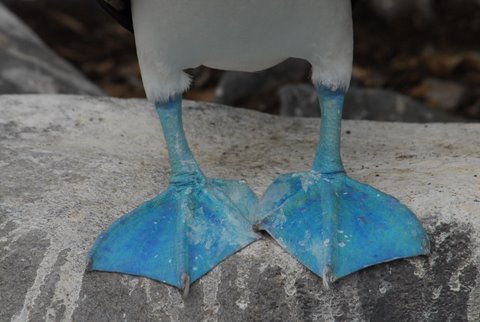
If I had to come up with a single word to describe the Galapagos Islands it would be difficult if not impossible to do. ‘Amazing’ is an overused word… as is ‘fantastic’, and ‘wonderful’ just doesn’t do the islands justice. Some might even choose ‘weird’ to describe some of the very unique species that make the Galapagos their home. Perhaps the French word ‘incroyable’ might fit the bill. What would you choose?
The islands and the flora and fauna that inhabit them truly are incredible. I cannot think of anywhere else on Earth (except perhaps Antarctica) that you can watch wild animals in their natural habitat go about their daily business (nesting, feeding, playing) at such close range, where the animals don’t seem to be bothered by your presence. There are limits of course and that is why there are strict national park rules about not getting too close to the animals as well as rules ensuring that visitors don’t collect plants or rocks while on shore. In a nutshell the regulations are in place to make sure that all park resources (both living and non-living) are left as we find them.
Our itinerary aboard the Samba had us visiting 6 or so of the thirteen larger islands that make up the Galapagos archipelago. The Galapagos Islands are all volcanic in origin, and they are quite isolated – they are located about 1000 kilometres west of the South American continent. The first islands to emerge from the ocean did so between 5 and 10 million years ago while some of the other islands broke the surface much more recently (the eastern islands are reported to be the oldest… the western the youngest). The islands are still volcanically active and in fact the most recent eruption was just last year!
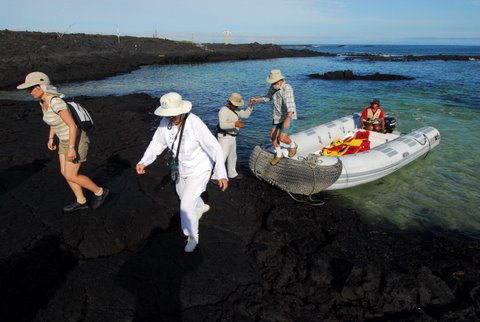
When oceanic volcanic islands are created they are devoid of life… they start with no living things on them at all. So how did all of the plants and interesting creatures that we see on the islands today get there?
The answer is fairly straightforward. Any plant of animal now native to the Galapagos must have dispersed to the islands by some means or another. Other than via the hand of humans (in boats or planes) there are two natural ways for organisms to travel to the islands – by sea or air.
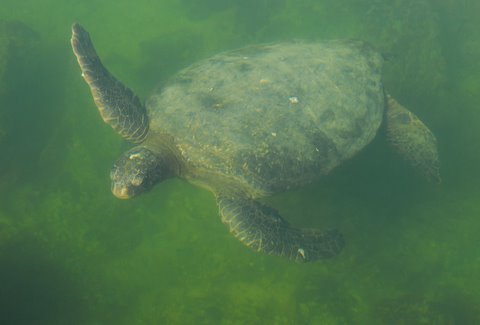
Some animals arrived by swimming or flying under their own steam while others may have been blown by strong winds. Sea lions, fur seals, sea turtles and penguins are all great swimmers and could easily have found their way to the Galapagos under their own steam. The Yellow Warblers and Vermilion Flycatchers that are now resident on the islands may have been blown off course many moons ago on their migration from North America to South America and successfully established populations on the islands. Some plants, their seeds and spores were carried by air currents, others by ocean currents but many (if not most) were likely transported by birds. Some bird species are seed and/or fruit eaters and in many cases the seeds are not damaged when they go through the bird’s digestive system. So, these birds can transport seeds in their stomachs, which they can expel complete with fertilizer in a new place (like an island!).
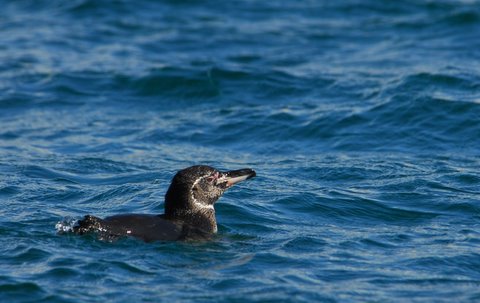
The Galapagos are in a great location to receive immigrants by both air and ocean currents. Trade winds blow toward the Galapagos from the South American mainland, and similarly ocean currents wash out from the coast of South America in a way that increases the chances of organisms reaching their shores. Some of the ocean currents around the islands are cold water currents while others are warm. It is thought that the ancestors of the Galapagos Penguin likely originated from a penguin population in southern South America that made its way to the Galapagos by following the Humboldt Current (a cold water current) that comes up from Antarctica.
Islands because of their isolation (away from the mainland or continent) typically have fewer species of both plants and animals (compared with the mainland) and often times the species found on islands are endemic… which means they are unique and are not found anywhere else. The Galapagos has a fairly low diversity of wildlife species, but a very high percentage of these species are endemic.
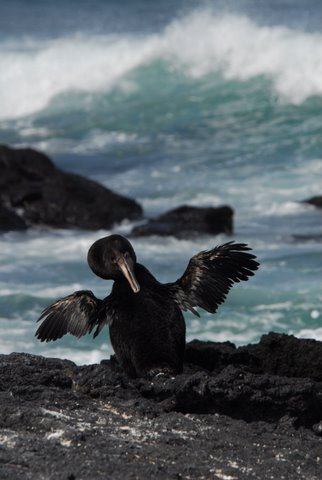 Flightless Cormorant, Galapagos Islands
Flightless Cormorant, Galapagos Islands
Some of my favourite creatures on the Galapagos include the Marine Iguana (a sea-going iguana), the Flightless Cormorant (the only cormorant in the world that has lost its ability to fly), the Galapagos Penguin (the most northerly penguin in the world) and the beautiful Blue-footed Booby! The Marine Iguana, the Flightless Cormorant and the Galapagos Penguin are all examples of endemic species.
I didn't realize how volcanic the Galapagos are. I went on "the Route" to see the satellite image of them, and they are quite a site. I invite others to view it after they give this posting a read. It's quite interesting. I like to try to see any of the animals, but alas, "no hay".
http://blogs.bcit.ca/catttrax2/journey/route
Click on the May 1 KMZ icon.
Great photos (again). I am really looking forward to seeing you and hearing of your adventures!
Terry

 Funded by TEK
Funded by TEK
Dear Mr. Catt :)
The flora and fauna of the Galapagos seem so exceptionally vulnerable, exposing their personal lives and stories to total strangers, if not enemies. How absolutely beautiful they are. Your pictures and notes raise our awareness of the importance of the institutions that protect such vulnerable critters. The Flightless Cormorant and Sally Lightfoot Crab are our favourites.
We enjoyed listening to your interview with a former student. The sounds from the forest at night were cool. We are studying the gold rush in school this month and the effects of the gold rush on salmon spawning, and the First Nations people. Mr. Catt, could you please tell us a bit about the type of fish that live in the Amazon River and how the gold mining might affect them?
The COAST class :)